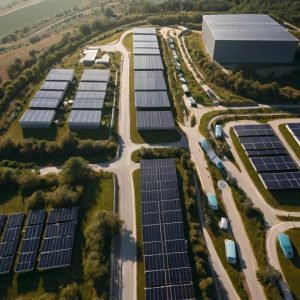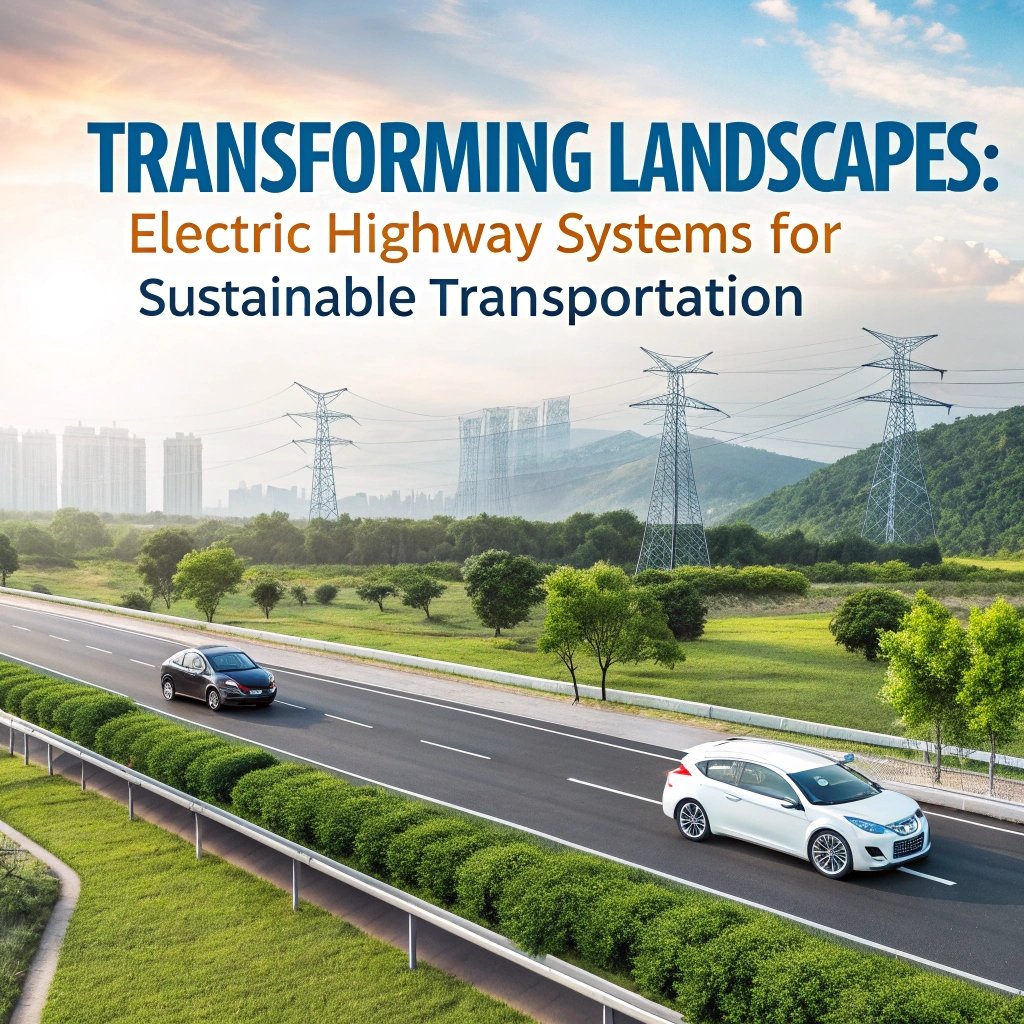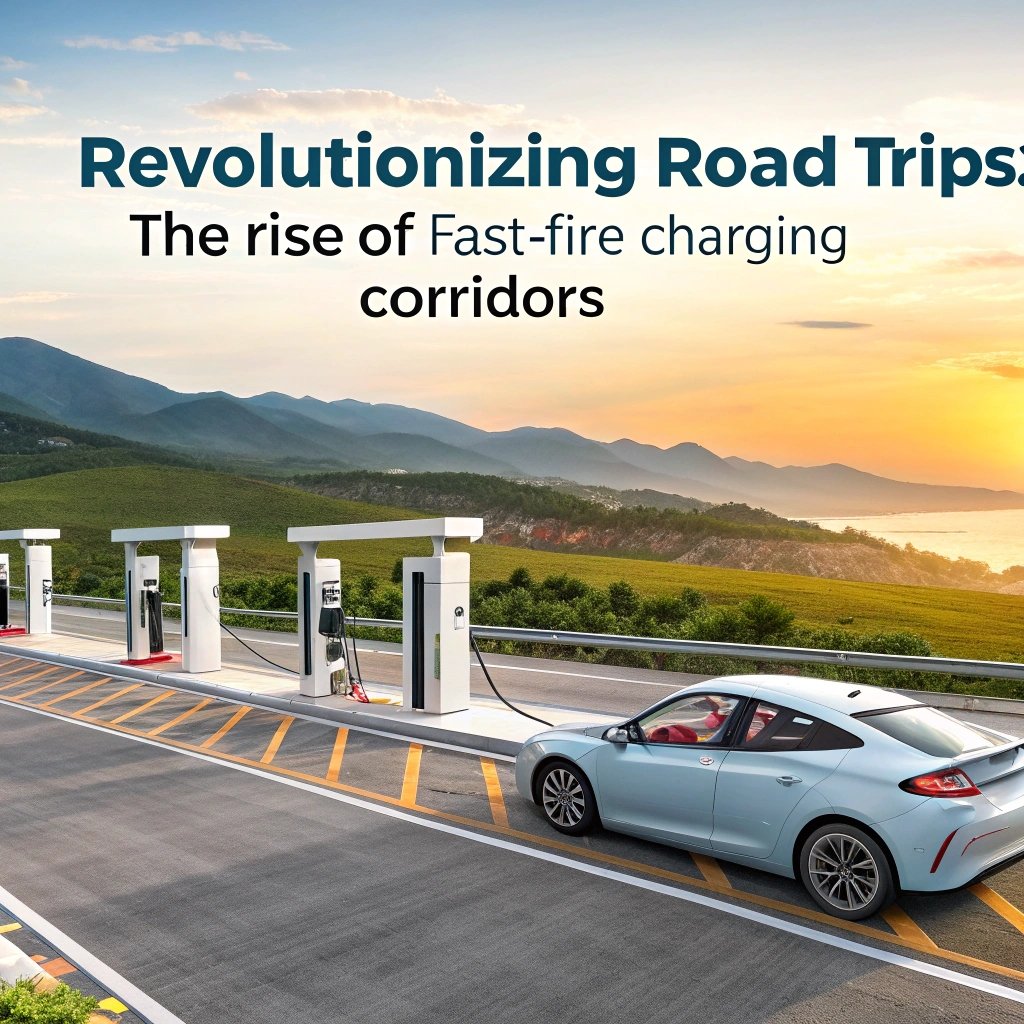As we continue on our journey towards a more sustainable future, one crucial step is becoming increasingly clear: electrifying transportation. And for that to happen, there needs to be fast and reliable energy storage solutions.
Let’s face it – electric vehicles are the future. But as their popularity grows, so does the need for efficient charging infrastructure.
Currently, most public stations can’t support a high volume of simultaneous chargers, slowing down adoption rates.
From urban megacity hubs to rural areas with limited power sources and extreme temperatures that damage batteries or electrical grids – what if there’s a way forward that meets everyone where they are?
Why Regions Need Specialized Energy Storage Solutions for Electric Vehicle Charging Infrastructures
Region-Specific Energy Storage Solutions Are Key to Efficient Electric Vehicle Charging Infrastructure
Electric vehicle charging infrastructure is crucial for widespread adoption, yet it poses significant challenges. High demand and limited capacity can strain local electrical grids, making it difficult to keep up with the growing number of electric vehicles on the road.
To mitigate this issue, region-specific energy storage solutions are essential. Different geographical regions have unique characteristics that necessitate tailored approaches to energy storage. For instance, coastal areas face different challenges than inland regions due to varying solar irradiance and wind patterns.
Cold climates require more efficient thermal energy management systems to prevent battery degradation and maintain performance in freezing temperatures. On the other hand, hot environments demand specialized cooling systems for overheated batteries that can’t operate optimally when exposed to extreme heat.
Regional energy storage solutions must also account for regional power grid dynamics. For example, charging patterns vary significantly across cities with distinct population densities and usage habits. To ensure reliable and efficient EV charging infrastructure, local grids require customized energy storage strategies that adapt to the region’s unique electrical demands.
By addressing these regional differences in energy requirements, region-specific energy storage solutions can help prevent widespread strain on power grids and ensure a smooth transition towards sustainable transportation.
Challenges in Developing Region-Specific Battery Technologies
In regions around the world, electric vehicle adoption is driving innovation in battery technology – particularly region-specific solutions designed to tackle unique local challenges. From extreme temperatures to grid variability and regulatory differences, these innovations hold significant potential for addressing specific regional demands.
One primary challenge is adapting battery chemistry to local conditions. Temperature plays a crucial role in determining how energy storage devices perform over time. For instance, batteries exposed to prolonged cold snaps during winter months experience reduced efficiency due to low temperatures. This can be attributed to the decreased mobility of ions within the electrolyte and changes in electrochemical reactions.
To mitigate these effects, engineers are exploring new materials that enhance thermal stability at both high and low temperatures. Graphene-based coatings have shown promise in this regard, as they can improve conductivity while reducing heat transfer across the battery. Additionally, researchers are developing advanced thermal management systems that utilize phase-change materials to regulate temperature within optimal ranges.
Higher charging requirements for colder climates further complicate matters. Regions with extreme cold need specialized batteries capable of operating effectively at lower temperatures (-20°C to 5°C). These require cooling systems designed specifically for low-temperature environments or new battery chemistries engineered to handle thermal stress more efficiently.
In contrast, areas with very hot summers necessitate heat management strategies and materials that can maintain optimal performance in high ambient temperatures. This includes innovative thermal interfaces and advanced heat sinks for efficient cooling systems, as well as robust protection mechanisms against overheating events.
Another critical factor is the variability of local grid supply. Regions lacking stable or efficient grids require more localized energy storage solutions designed to work with regional power infrastructure that has varying voltage profiles and transmission rates.
To address these challenges, manufacturers must ensure compliance with specific regulatory requirements in each region before entering new markets. For instance, batteries intended for North American use may need UL certification to meet local standards, while those destined for European markets must conform to CE marking regulations.
In regions prone to frequent blackouts and brownouts, advanced battery backup solutions provide reliable energy supply during critical periods of system failure or congestion on the grid.
To illustrate the significance of region-specific energy storage technologies, consider examples from companies like Tesla and LG Chem. Their innovative approaches aim to enhance performance in specific local conditions by developing new materials with enhanced thermal stability, increased voltage tolerance for extreme temperatures, and optimized power output tailored to regional demands.
Visual aids such as infographics can help demonstrate how temperature affects battery life expectancy (see figure 1) or illustrate the importance of considering regional grid dynamics when designing energy storage systems.

By prioritizing region-specific solutions that address local conditions and needs, innovators in the field are pushing boundaries on what is possible with energy storage technology – ultimately driving progress toward a more sustainable transportation sector around the world.
The growth of EV adoption highlights an increased need for efficient and localized battery technologies adapted to regional challenges. Addressing these hurdles requires collaboration among manufacturers, policymakers, researchers, and industry stakeholders to develop region-specific solutions that can effectively meet regional demands while ensuring grid resilience.
As such innovative approaches will ultimately lead us further down the path toward creating a more resilient energy infrastructure for an increasingly electrified transportation sector – supporting both sustainability goals and community needs.
How Geographical Locations Affect the Efficiency of EV Charging Systems
Geographical location is no longer an obstacle to widespread EV adoption; innovative region-specific energy storage solutions are revolutionizing the game. By understanding and addressing unique geographical challenges, we can create more efficient and sustainable charging infrastructure.
Climate plays a significant role in determining energy consumption and storage needs for electric vehicles (EVs). In warmer regions like Dubai or Las Vegas, where temperatures soar during the day, insulation on batteries becomes less of an issue due to reduced demand. This design allows for thinner battery layers, decreasing overall weight while maintaining performance. For example, researchers at the University of Nevada have developed a high-temperature thermal management system that can maintain battery health in extreme conditions.
Conversely, regions like high-altitude areas with thin air pressure require more power to charge EVs due to increased electrical resistance. To mitigate this challenge, engineers are developing charging systems with advanced materials and designs that adapt to the reduced air pressure. For instance, Tesla’s Supercharger system uses a modular design that can accommodate changing altitude levels.
Thick forests or mountains pose significant logistical challenges for establishing charging stations in areas like Yellowstone National Park or Banff National Park. Designing charging stations that can withstand 100-year floods is crucial to ensure public safety and accessibility. This has led to innovative solutions, such as elevated charging systems with waterproof materials, used by companies like Tesla.
Coastal regions present a unique set of challenges due to saltwater damage and corrosion risk. Waterproof designs made from materials like stainless steel or marine-grade aluminum can provide an effective solution for areas prone to flooding, as demonstrated by the work of researchers at the University of California’s Berkeley campus.
To streamline energy storage in these diverse environments, companies are investing heavily in regional-specific infrastructure development. For example, Norway has set ambitious targets for EV adoption and is prioritizing charging infrastructure placement along major highways and coastal routes. Similarly, countries like Chile have implemented specialized systems to mitigate the effects of extreme temperature fluctuations on battery performance.
Inland cities with less variability in climate or terrain can benefit from optimized energy storage solutions by implementing best practices for grid integration. By adopting region-specific approaches, we can create more efficient, sustainable EV charging infrastructure that caters to diverse geographical challenges and contributes to a cleaner environment.
For instance, the city of Denver has implemented an innovative approach using phase-change materials in building construction to reduce peak demand on its electrical grid during extreme cold snaps. Similarly, companies like Volkswagen Group are developing flexible battery solutions for urban areas with varying terrain conditions.
Through research and development by organizations such as the U.S Department of Energy, we can better understand how to optimize regional energy storage challenges for widespread EV adoption.
By adopting these region-specific approaches, we can create a more sustainable future where electric vehicles don’t just drive less emissions but also do so without worrying about their battery health in extreme temperatures.
Environmental Factors Impacting Regional Energy Infrastructure Development
With climate change accelerating, electric vehicle adoption requires region-specific energy storage solutions. Did you know that regions near the equator receive an average of 70% more solar radiation than those at higher latitudes? This disparity can significantly impact renewable energy output and charging infrastructure efficiency.
Climate plays a crucial role in shaping solar radiation patterns. For example:
– In regions like Southeast Asia, high levels of solar radiation can lead to higher temperatures, increasing heat-related energy losses and requiring specialized cooling systems that could see up to 30% increase in battery replacement needs.
– At higher latitudes (e.g., Scandinavia), low sunlight hours reduce overall renewable energy output by reducing the effectiveness of traditional batteries.
Geographical location also affects access to natural resources. For instance:
– Regions with abundant wind power, such as Denmark, benefit from high penetrations of solar that allow for greater use of kinetic energy storage systems.
– Areas like arid regions require innovative cooling solutions and advanced thermal management strategies to ensure efficient charging infrastructure despite limited water availability.
Innovative energy storage solutions can help mitigate some of these regional challenges. However, it’s essential to consider local climate conditions when selecting building materials that won’t corrode quickly or degrade easily. This allows for the development of more sustainable electric vehicle charging infrastructure that meets the unique needs of each region.
Consider leveraging available natural resources (e.g., wind, solar) to optimize energy output and storage needs. For example:
– Regions with high solar radiation, such as Australia’s north coast, can benefit from large-scale battery installation to mitigate nighttime load shedding during peak hours.
Here’s how regional differences can impact your electric vehicle charging infrastructure:
Local climate conditions play a crucial role in the design of efficient energy systems and storage units that maintain optimal performance despite extreme temperatures. By understanding local environmental factors you’ll be able to choose materials that won’t degrade easily or corrode due to exposure to temperature fluctuations, providing an efficient and durable solution for your electric vehicle charging infrastructure needs.
The Role of Local Regulations on Electric Vehicle Charging Infrastructure Planning
In many parts of the world, rapid urbanization is putting pressure on local governments to develop strategies for electric vehicle charging infrastructure development. One key factor that can significantly influence this process is transparency in regulatory frameworks.
A clear plan with incentives like tax credits or rebates can go a long way in encouraging investment in EV charging stations along highways. Take California’s San Joaquin Valley, for instance – its 5-year program invested over $15 million in fast-charging infrastructure development, leading to notable increases in electric vehicle adoption and reduced range anxiety among drivers.
Developing a comprehensive plan that takes into account local topography and population density is equally crucial. This can be achieved through smart strategies like repurposing existing public spaces or leveraging green technologies to minimize the footprint of charging stations. In Singapore’s densely populated urban areas, for example, innovative approaches have led to the implementation of parking systems that direct EV owners to charging hubs.
When it comes to regions with limited space, collaboration between local authorities and industry partners becomes even more vital. This partnership can help optimize infrastructure deployment by identifying underutilized land or repurposing existing public spaces. The outcome? Reduced costs associated with building out an inefficient network.
To foster electric vehicle success in cities where growth is rapid but space is scarce, a combination of planning and innovative thinking is essential. Just as car manufacturers didn’t build cars for deserts but rather designed them for roads – we must adapt our infrastructure designs to suit regional needs.
Mitigating the Effects of Climate Change on Regional EV Charging Hubs
Regionally Tailored Energy Storage Solutions: Adapting to Climate Change’s Impact on EV Charging Hubs
As climate change intensifies its grip on regional electric vehicle charging hubs, it’s time to rethink our approach to energy storage solutions. The unique needs of each region necessitate a customized strategy for mitigating the effects of global warming.
One key challenge is harnessing renewable energy in regions with high levels of solar irradiance. Advanced battery technologies can optimize efficiency and reduce costs, but this benefit comes at a cost: increased heat generation within the batteries themselves. In places like California, where sunlight abounds, specialized thermal management systems are crucial to prevent overheating and maintain system functionality.

On the other hand, regions battered by hurricanes or ravaged by wildfires require innovative solutions that prioritize cooling and reliability. Coastal communities struggling with frequent natural disasters need energy storage systems designed to withstand extreme weather events. For instance, a cutting-edge facility in Florida has implemented an advanced grid management system to ensure seamless power supply during intense storms.
To address these regional disparities effectively, we must employ microgrids and smart grids that allocate energy resources in real-time. In areas with limited sunlight exposure, such as the Arctic or high-altitude regions, specialized thermal management systems can mitigate heat-related issues for EVs. Moreover, advanced weather forecasting tools enable proactive decision-making to prepare for extreme weather events.
Imagine being able to forecast a category 5 hurricane’s arrival and deploying backup power generators accordingly. In coastal communities like Miami Beach, such proactive measures could make the difference between life and death. By tailoring our approach to regional challenges, we can create sustainable EV charging hubs that not only adapt but thrive in an increasingly dynamic climate.
Section7 Collaborative Efforts Among Governments and Private Companies for Region-Specific Solutions
Region-specific energy storage solutions can only move forward through collaborative efforts from government agencies and the private sector. This is because economies of scale in production become a reality when multiple manufacturers pool their resources and capacities. By partnering with companies like Tesla and LG Chem, for instance, governments can tap into significant cost savings in battery manufacturing – a $50 million facility shared between two parties would be more affordable than each bearing the entire cost alone.
Such partnerships also facilitate technology transfer. When private sector firms share knowledge and expertise with government agencies, it accelerates development time for region-specific solutions. For example, collaborations like those between industry experts and national laboratories can yield breakthroughs that might have taken years to develop otherwise. Moreover, sharing data can reveal new insights that inform the design of more efficient systems.
A further key point is that by working together on regional energy storage solutions, governments and companies establish standards for production. This enables seamless integration with existing infrastructure and facilitates economies of scale in manufacturing. Furthermore, establishing common standards could lead to a reduction in costs associated with interoperability issues – ultimately benefiting both consumers and businesses looking to deploy region-specific systems.
Another benefit is that shared data can reveal the effectiveness of regional solutions on real-world applications, like urban areas where charging needs are more varied. By working together, governments and companies might also be able to identify specific challenges such as power grid resilience in regions with heavy population density or infrastructure limitations.
Governments may even consider incentives for businesses participating in region-specific energy storage projects that can encourage investment from private sectors.
For example, offering tax breaks could incentivize more manufacturers to participate. The key is that governments and companies are able to set the stage for a sustainable transition towards clean energy solutions by fostering regional cooperation and knowledge sharing.
Section8 Advancements in Materials Science for Enhanced Energy Storage Efficiency
Section8 has been leading the charge in developing more efficient batteries, which could revolutionize electric vehicle charging infrastructure. By focusing on advanced materials and cutting-edge technology, they’re creating a safer, faster way to power your car.
With their focus on reducing energy loss during charging, Section8 is using advanced materials like graphene and nanotechnology. This approach minimizes heat generation while maximizing battery performance. As a result, they expect to achieve 30% more efficient batteries than traditional ones. That’s the kind of leap forward that can transform the way we think about electric vehicle range.
Imagine having access to faster charging times without compromising safety – it’s like unlocking the doors to a whole new world of electric vehicle freedom! Section8 is making this possible with their innovative approach to battery technology. By harnessing the power of graphene and nanotechnology, they’re reducing heat generation while boosting performance. The result? A 30% increase in efficiency over traditional batteries – that’s music to our ears!
Section8’s innovation involves using advanced materials to minimize heat generation during charging. This results in faster charging times without compromising safety. With their technology, you can expect a noticeable improvement in electric vehicle range and the entire ecosystem of electric vehicles.
Smart City Integration – How Urban Planning Can Improve EV Charging Infrastructure
Smart city integration has transformed the way electric vehicle charging infrastructure operates around the world, enabling cities to create efficient networks that minimize congestion and reduce wait times for drivers.
When it comes to EV charging infrastructure, urban planners must consider factors such as grid capacity, population density, and traffic patterns. By implementing smart technologies in this space, cities can optimize their energy distribution systems.
One way cities are tackling the challenge of optimizing EV charging is through the implementation of smart grids that adjust power output based on real-time demand fluctuations. This approach ensures a steady supply of electricity to users when they need it most, thereby reducing long wait times or potential outages at public charging stations.
In addition to implementing smart grids, data-driven urban planning enables cities like Los Angeles to identify areas with high EV usage and prioritize investments in those locations. By doing so, these cities can create targeted networks that meet the energy demands of residents while minimizing strain on local infrastructure. This approach also allows for efficient management of traffic flow around public chargers.
Through smart urban planning, drivers are more likely to adopt electric vehicles due to seamless access to charging stations, even in densely populated areas such as Seattle. For instance, Seattle has implemented solar-powered EV chargers that reduce the city’s strain on traditional power grids while providing cleaner electricity for residents.
Cities like Oslo have successfully used geospatial analysis and sensor data from IoT devices to pinpoint high EV usage hotspots. By targeting these zones with electric vehicle charging infrastructure, cities can create more efficient networks. Additionally, smart urban planning enables cities such as Barcelona to use algorithms that analyze traffic patterns, public transportation usage and other factors to identify areas where there is high demand for electricity.
Data-driven urban planning uses real-time data from various sources like sensors and IoT devices to optimize the placement of charging stations. For example in London’s case using AI-powered systems can provide an accurate analysis of EV use based on location allowing cities to optimize their grid capacity, traffic patterns, population density etc.
How Region-Specific Energy Storage Solutions Revolutionize Electric Vehicle Charging Infrastructure Around the Globe
Role of Artificial Intelligence in Optimizing Regional EV Charging Patterns
Great cities don’t wait for their residents to charge up on time. Regions are already leveraging region-specific energy storage solutions that integrate with AI-optimized charging patterns, reducing waiting times and increasing convenience for electric vehicle owners.
The more seamless the experience is when drivers pull into a public station or plug in at home, the faster they’ll be offloading vehicles like last season’s model. With regions well prepared to meet peak demand on high EV days, there will be less traffic congestion due to charging frenzies.

Artificial intelligence optimizes energy usage patterns that help reduce grid strain during peak hours when most electric vehicle charging takes place. As more regions upgrade their infrastructure with region-specific storage solutions and advanced AI-powered management systems, the efficiency of public transportation is increased as well.
Regional cities are at a significant competitive advantage for sustainable urban planning by integrating these smart technologies into the existing EV ecosystem.
Take decisive action today to start revolutionizing your city’s electric vehicle charging landscape – invest in region-specific energy storage solutions that harness the power of AI-driven optimization and watch how this simple yet effective technology can transform public transportation in its wake.



